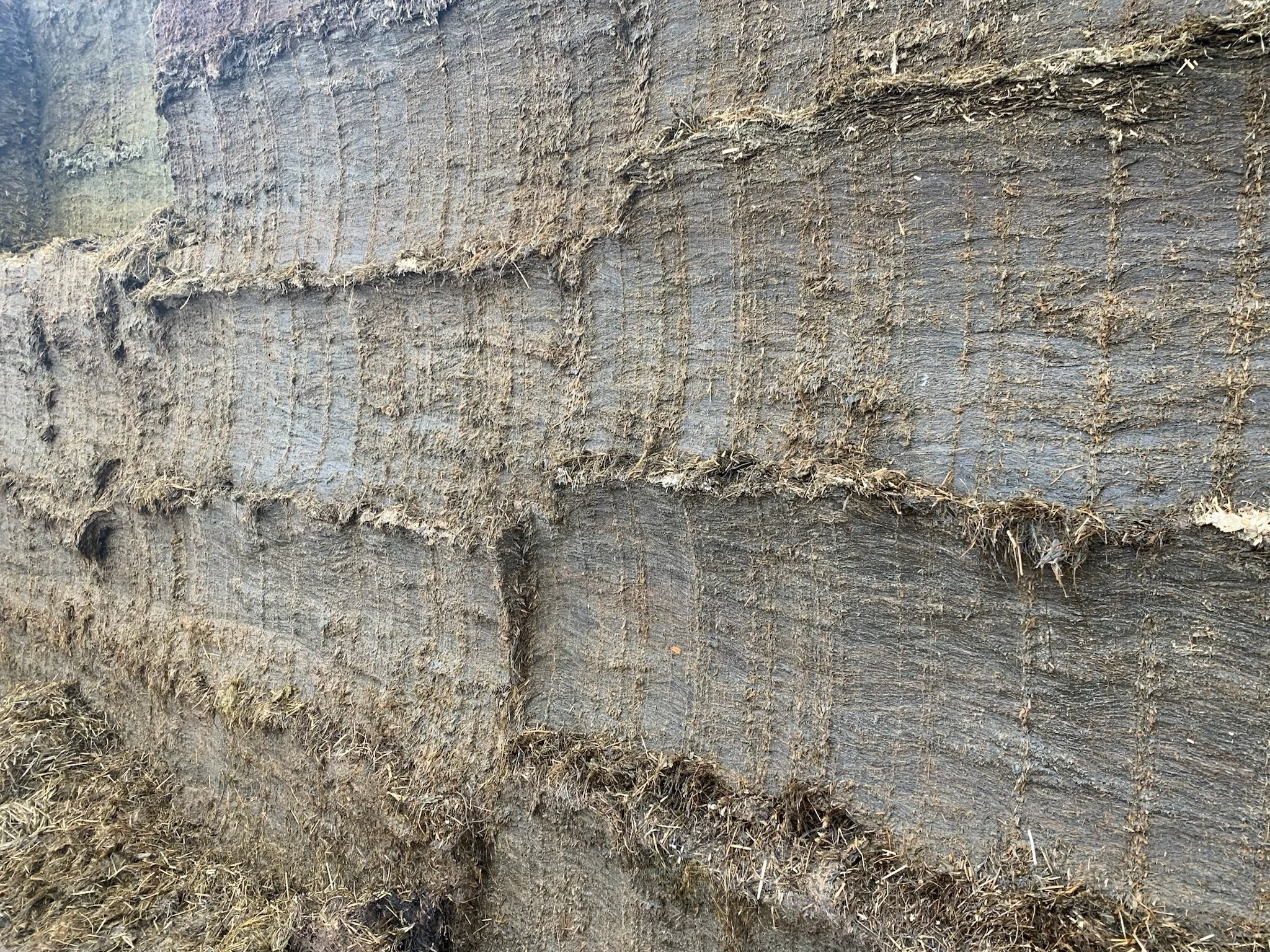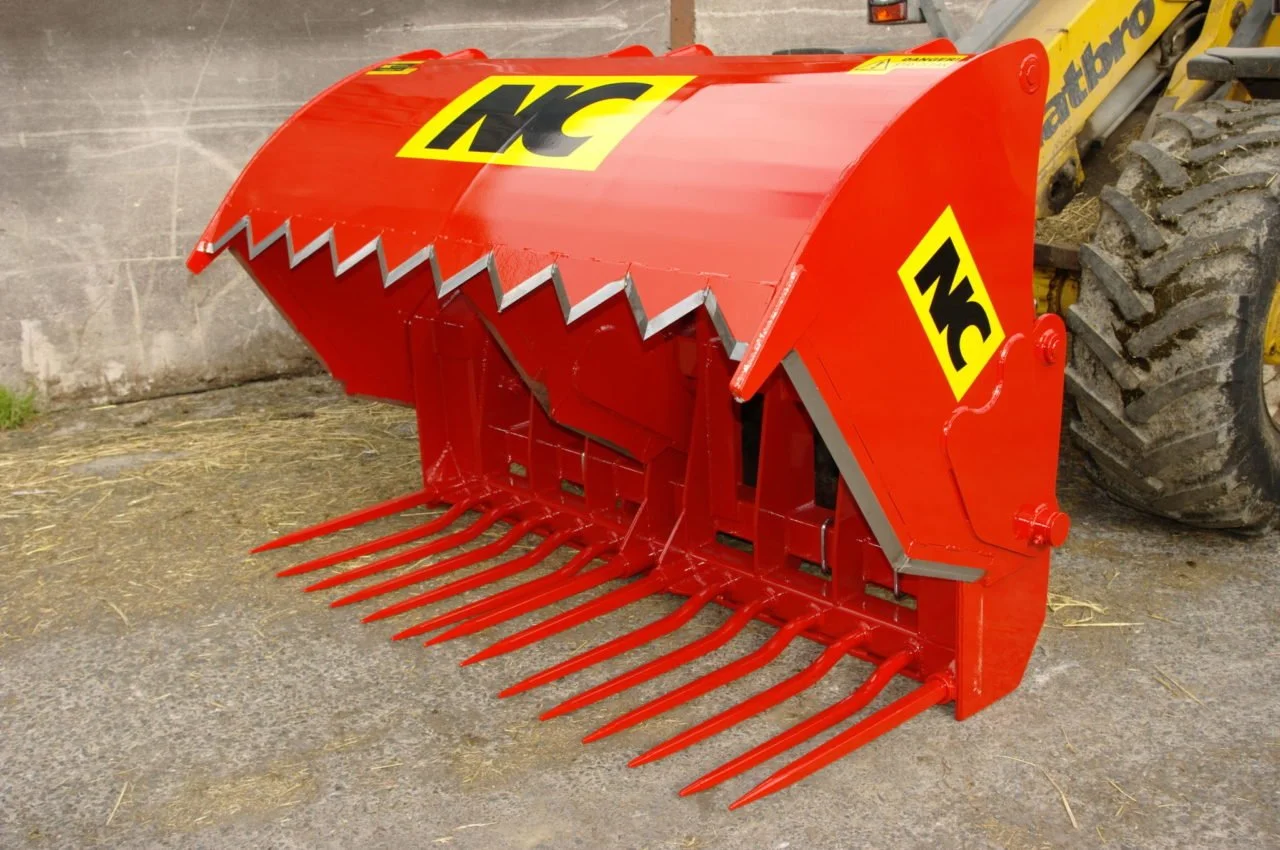Is a silage shear grab worth the money?
During an idle chat with a farming friend it dawned on me that I have never written about shear grabs in detail. If you’re not really into silage then that’s not much of a revelation, but for me it was something of a shock because it’s one of the first things I notice when I’m on a farm visit. Now I’m not really bothered by the colour or the brand, but I am really, really interested if there isn’t one, or if the grab is looking pretty sorry for its self. So it's time to correct this.
So why is the silage grab so important?
Well if you’re feeding bale silage then it’s not important - obviously - but for everyone else the grab (or lack of one) tells me something. If the shear grab is in fine fettle and regular use, then chances are the rest of the farm will be in good order too, and that you really care. So does that mean if the shear grab is knackered then you don’t care? Well no it doesn’t, it probably just means you don’t view the grab as being quite as important as I do.
Strimech shear grab hungry for silage
For ‘importance’ in the previous paragraph, read ‘money’ because money is what really matters isn’t it? And I think the shear grab is an extremely valuable piece of kit that might just be the most important thing outside the milking parlour. I realise that’s a pretty bold statement and I’m not going to argue that it might not be true, but what I will try and argue is that the shear grab is worth a lot of money to you.
Does a shear grab pay for itself?
So this is the key, what’s the payback to investing in a shear grab? Firstly we need to do some maths and make some assumptions. Everyone is tightlipped about what they pay for a bit of kit but for the sake of calculation, let assume it's £5000 for a brand new shiny one. So if you’re feeding 250 dairy cows then you’re probably munching through 2500 tonnes of silage even if the girls are grazing some of the year. Make that 5000t if they’re housed 365 days so that grab is picking up a lot of silage.
A clean silage face is more resistant to spoiling and aerobic losses
Picking up silage is not really the critical bit though because it’s the grabs ability to cut the silage face cleanly that I’m really interested in. Because the silage face is where most of the wastage occurs, wastage that you don’t see as the aerobic bacteria turn your valuable silage into heat, carbon dioxide and ethanol. If the shear grab does a decent job it will create a much less permeable surface and keep the amount of spoiling to a minimum. If the grab reduces spoiling on the face by 5% and your silage is worth £40 per tonne - then it’s saved you £2 for every tonne it’s picked up. So the payback is 1-2 years at that rate.
What can a shear grab really save me?
I know what you’re thinking - “you’ve rigged those figures haven’t you?” Well yes I have, but in my defence, I’m not sure you would believe me if I said the grab might just save you 10% of the silage feed value, and that’s not an exaggeration.
The in-clamp losses can be easily 40% of the feed value if you’re not doing an optimal job. Get everything spot on and your still going to lose maybe 5-10% once you’ve opened the face, especially if you’re feeding year round. That’s because you lose more in the summer than the winter (a topic for another article really).
Shear grab by NC Engineering showing its teeth
Now a shear grab is not a magic wand, and it can’t cover up for problems with clamp design, chop length or consolidation, but it can (and should) be a critical part of a system. So if a farmer isn’t using one then I’m really intrigued as to the reason why.
Shear grabs for all
This is not designed as a dig at dairy farmers, however it may seem. For me an AD plant that’s not using a shear grab is an even bigger issue. You guys haven’t even got the usual livestock farmer excuses - calving, escaped cows, etc etc etc. The value of the silage feed stock is just as business critical irrespective of what you’re using it for. A shear grab gives you more of a chance of protecting that feed value between the clamp and the bugs that are going to feed off it.
Keeping up a good bite.
Nobody really looks forward to a trip to the dentist, but as my grandma always said, teeth are so important. One of the most often overlooked sets of teeth are those on the shear grab. A full set of great gnashers tell me that someone is looking after the shear grab and so the shear grab can look after the silage face. The replacement metal isn’t a fortune - may be just over a tenner per tooth - so there is really no excuse for a blunt or missing teeth on the grab.
A full bite from the Albutt shear grab
And while we’re looking at the bite, it’s something to consider when choosing a particular brand or model. Not just the ease of tooth replacement but the actual bite of the jaw. Some machines bite down to the tines and some bite close to the fork tines. I prefer grabs that bite fully past the tines (a sort of over bite) as this produces a cleaner silage face. Jaws with a lesser bite produce more of a tear that’s not so good a sealing the silage face.
But what ever machine you use or choose, make sure it is looked after and that it is actually used. We have all seen shear grabs left at the mouth of the clamp whilst the operator tries to tear out some silage with a bucket on the telehandler because they don’t have time to swop over attachments, or more likely can’t be bothered to get out of the cab. Yeah you have to get out and connect some hydraulic pipes but surely it is worth the bother….. Just remember the £2 per tonne figure and all of a sudden it’s not so much of a chore.
If you want to know more about reducing losses from for your silage clamps or would like to discuss any other aspects covered in this series, contact me at jeremy@silageconsultant.co.uk



